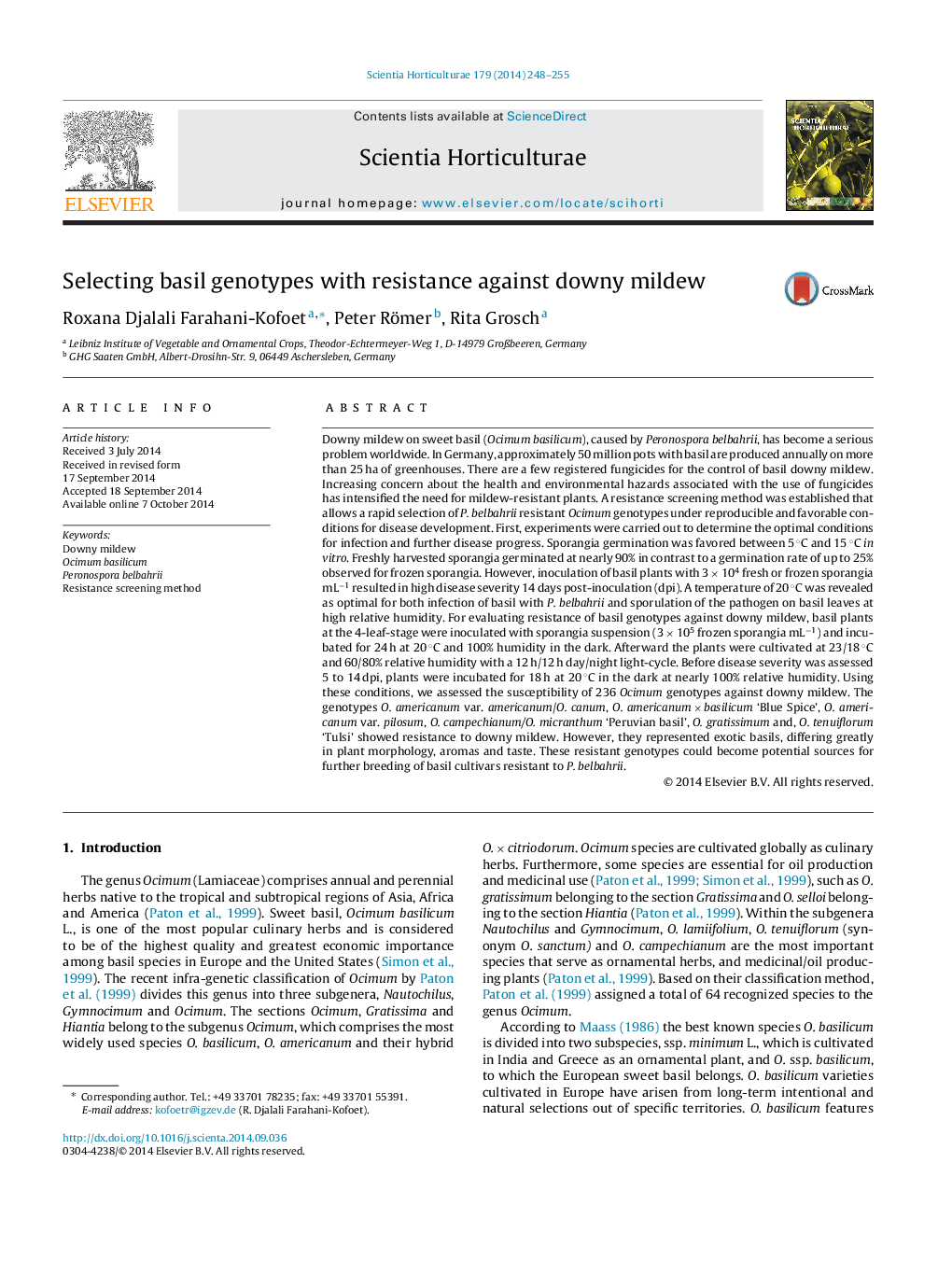| Article ID | Journal | Published Year | Pages | File Type |
|---|---|---|---|---|
| 4566623 | Scientia Horticulturae | 2014 | 8 Pages |
•Impact of temperature on sporangia germination, infection and disease progress of Peronospora belbahrii was investigated under controlled conditions.•The possibility to use frozen sporangia as inoculum was tested.•A method was established to screen the susceptibility of basil genotypes to downy mildew.•236 basil genotypes were screened for resistance against downy mildew under controlled conditions.•Some exotic basils differing greatly in plant morphology and aromas turned to be resistant.
Downy mildew on sweet basil (Ocimum basilicum), caused by Peronospora belbahrii, has become a serious problem worldwide. In Germany, approximately 50 million pots with basil are produced annually on more than 25 ha of greenhouses. There are a few registered fungicides for the control of basil downy mildew. Increasing concern about the health and environmental hazards associated with the use of fungicides has intensified the need for mildew-resistant plants. A resistance screening method was established that allows a rapid selection of P. belbahrii resistant Ocimum genotypes under reproducible and favorable conditions for disease development. First, experiments were carried out to determine the optimal conditions for infection and further disease progress. Sporangia germination was favored between 5 °C and 15 °C in vitro. Freshly harvested sporangia germinated at nearly 90% in contrast to a germination rate of up to 25% observed for frozen sporangia. However, inoculation of basil plants with 3 × 104 fresh or frozen sporangia mL−1 resulted in high disease severity 14 days post-inoculation (dpi). A temperature of 20 °C was revealed as optimal for both infection of basil with P. belbahrii and sporulation of the pathogen on basil leaves at high relative humidity. For evaluating resistance of basil genotypes against downy mildew, basil plants at the 4-leaf-stage were inoculated with sporangia suspension (3 × 105 frozen sporangia mL−1) and incubated for 24 h at 20 °C and 100% humidity in the dark. Afterward the plants were cultivated at 23/18 °C and 60/80% relative humidity with a 12 h/12 h day/night light-cycle. Before disease severity was assessed 5 to 14 dpi, plants were incubated for 18 h at 20 °C in the dark at nearly 100% relative humidity. Using these conditions, we assessed the susceptibility of 236 Ocimum genotypes against downy mildew. The genotypes O. americanum var. americanum/O. canum, O. americanum × basilicum ‘Blue Spice’, O. americanum var. pilosum, O. campechianum/O. micranthum ‘Peruvian basil’, O. gratissimum and, O. tenuiflorum ‘Tulsi’ showed resistance to downy mildew. However, they represented exotic basils, differing greatly in plant morphology, aromas and taste. These resistant genotypes could become potential sources for further breeding of basil cultivars resistant to P. belbahrii.
